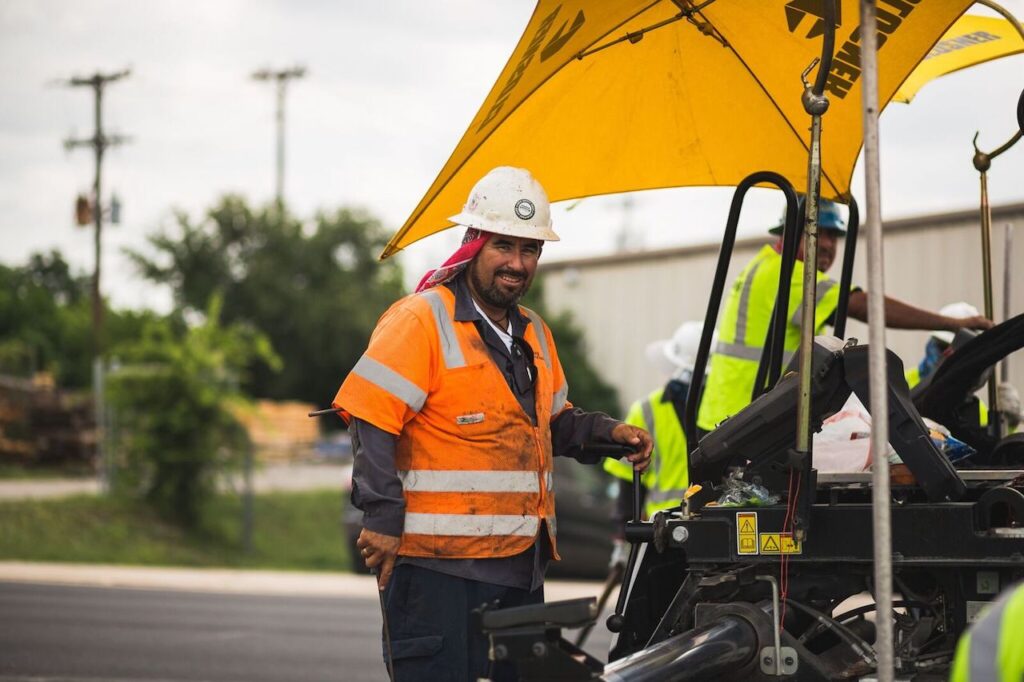The Importance of Asphalt Paving Temperature and Timing
Ever wondered how hot asphalt is when paving? Whether they are applying new pavement, an overlay or a patch, asphalt contractors pay very close attention to mix, ambient and ground temperatures throughout the project. Once the asphalt is installed, the contractor’s crew must move swiftly to compact the asphalt before it cools excessively. If the asphalt loses too much heat, it will be difficult or impossible to achieve the compaction necessary to ensure a long life, smooth ride and attractive surface.
How Hot is Fresh Asphalt When Paving?
When it arrives at the job site, hot-mix asphalt is normally between 275 and 300 degrees Fahrenheit. For the initial rolling, the temperature of the mix needs to be between 220 and 290 degrees Fahrenheit. If the mix temperature falls below approximately 185 degrees Fahrenheit before the final compaction, it will be too stiff to compact properly. How long the contractor has to complete compaction depends on the thickness of the course; thinner layers will cool faster than thicker ones. However, the ambient temperature, wind speed and ground temperature also affect the rate at which the asphalt will cool.
Asphalt Paving Temperature Requirements: What Temperature should Asphalt be Laid?
Ambient Temperature
The ambient or air temperature is the measurement with which most people are familiar. Most applications require that the ambient temperature is at least 50 degrees Fahrenheit and rising while the asphalt is being installed and compacted. If the wind velocity is high, the asphalt will cool faster, so on extremely windy days, the ambient temperature may need to be above 50 degrees.
Ground Temperature
The ground temperature is the temperature of the base on which the asphalt will be installed. This can be significantly lower than the ambient temperature, especially in the early morning following a cold night. Most contractors use an infrared thermometer to measure the ground temperature, which needs to be at least 50 degrees Fahrenheit and rising throughout the process.

The Importance of Asphalt Paving Temperature
The reason that the mix, ground and ambient temperatures are critical is that satisfactory results will not be achieved if the asphalt is not sufficiently compacted. Pavement that cools too rapidly will not have the density required, so the pavement will ravel, leaving the surface rough and prone to retain water. The pavement will not last as long as it should or provide the smooth, attractive surface for which asphalt is famous.
Because timing is critical, the skill and experience of the asphalt contractors crew will be an essential part of the project’s success. Rolling must begin immediately to achieve maximum compaction. This means that the contractor must ensure that workers have the right equipment. Jobs performed during cold weather may require more rollers, for example, or wider rollers. It may be necessary to alter the normal rolling pattern. It is also critical that the contractor’s equipment has been properly maintained to avoid breakdowns in the middle of the job.
You Need an Experienced Asphalt Paving Contractor
Paving in cold weather requires an experienced, reputable asphalt contractor with a proficient crew. Alpha Paving is an asphalt paving company in Austin, Texas and we have the expertise that you need. We offer a full range of pavement-related services, including asphalt paving, overlays, repairs, asphalt sealing, parking lot striping, speed bumps and concrete work. We routinely provide our services to customers in a wide variety of industries, including municipalities, educational facilities, shopping malls, churches, apartment complexes, restaurants, HOAs, airports, hospitals and manufacturing facilities. Alpha Paving is an award-winning paving company with impeccable references, a sterling reputation and a commitment to provide exceptional quality at competitive rates. If you have more questions about Asphalt Paving: Temperature & Timing, or would like a free quote, fill out the online form or call us today at (737) 258-8088.




